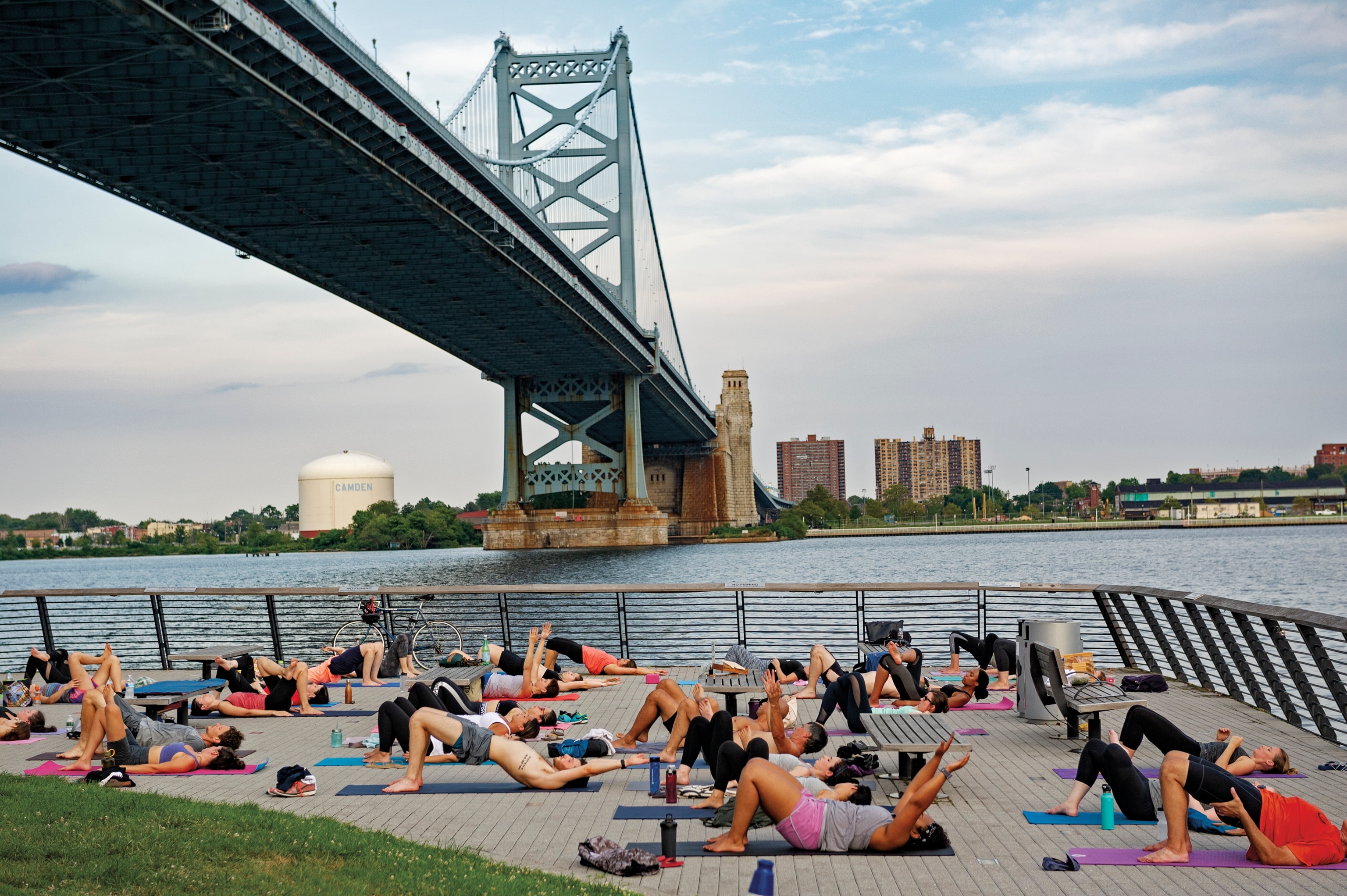No time for daily exercise? Weekend workouts still offer the same health benefits
New research shows that cramming 150 minutes of exercise into one or two days can reduce the risk of over 260 diseases, including diabetes and mental health conditions.

Struggling to fit workouts into your busy week? You’re not alone. New research suggests that “weekend warriors” who pack at least 150 minutes of exercise into one or two days enjoy similar health benefits to those who spread workouts throughout the week. Both groups had reduced risks for over 260 diseases, including diabetes, hypertension, and mental health conditions, the findings showed.
“Physical activity is known to affect the risk of many diseases,” says study co-senior author Shaan Khurshid, a cardiac electrophysiologist and cardiologist at Massachusetts General Hospital. “We show the potential benefits of weekend warrior activity for risk not only of cardiovascular diseases, as we’ve shown in the past, but also future diseases spanning the whole spectrum, ranging from conditions like chronic kidney disease to mood disorders and beyond.”
Another recent study found that being a weekend warrior reduced the risk of cognitive conditions such as dementia, Parkinson’s disease, stroke, and depressive disorders.
How weekend workouts can improve your health
Living a sedentary lifestyle raises a person’s risk of a range of ailments, including cardiovascular disease, type 2 diabetes, stroke, cancer, depression, and anxiety. About half of all Americans have chronic diseases that could be prevented with the help of regular physical activity, according to the U.S. Department of Health and Human Services.
However, about 25 percent of Americans are not active enough to protect their health, according to the Centers for Disease Control and Prevention. Only half of Americans meet the federal guidelines for physical activity: at least 150 minutes of moderate-to-vigorous activity—typically works out to five to six, 20- to 30-minute sessions per week—or at least 75 minutes of vigorous activity per week.
The nearly 90,000 people whose data the researchers analyzed in the new study were divided into three categories: regular exerciser, weekend warrior, and inactive. The average age of the study participants was 62, and 56 percent were women. They wore wrist accelerometers or sensors that tracked their physical activity over a week.
(Social running is all the rage—here’s why it’s good for you.)
Compared to those who didn’t exercise, regular exercisers and weekend warriors had a lower risk of more than 260 diseases over six years. The protective benefits for type 2 diabetes were highest, with 43 percent lower risk for the weekend warrior and 46 percent lower risk for the regular exerciser, respectively.
“Because there appears to be similar benefits for weekend warriors versus regular activity, it may be the total volume of activity, rather than the pattern, that matters most,” says Khurshid.
The findings likely apply to many people, says Jim Liu, a clinical associate professor of internal medicine and cardiologist at Ohio State University Wexner Medical Center.
“It’s great because a lot of us, honestly, probably fall into that weekend warrior category,” Liu says. “I personally do. By the time you get home from work, you have other responsibilities. I’ve got small kids, and I can’t just say, ‘I’m going to go out and exercise for half an hour.’”
The intensity of physical activity is measured in METs, or metabolic equivalents, by the Compendium of Physical Activities. Moderate exercise is anywhere from 3.0 to 5.9 METs and includes activities such as walking, yard work, and swimming. High-intensity exercise is anything 6.0 or higher, such as running, shoveling snow, or ballroom dancing.
The research adds to earlier studies that show that any amount of physical activity counts and allows people some flexibility, says Sara K. Rosenkranz, an exercise physiologist and associate professor of kinesiology and nutrition sciences at the University of Nevada Las Vegas.
If you’re not regularly getting moderate-to-vigorous physical activity throughout the week but have time to do it on the weekend, you can do something you enjoy, like a bike ride or a hike, she says.
“The thing to keep in mind is it doesn’t take much,” Rosenkranz says. “Even if it’s just a few minutes of moderate-to-vigorous physical activity here or there, you’re going to get a benefit.”
Working out even one or two days a week also lowered the risk of mood disorders, which is another major benefit.
(Do you really need 10,000 steps a day? Here’s what the science says.)
“We hear so much now about the mental health challenges that we all face, and there’s a great deal of evidence that shows that immediately doing some sort of physical activity, in particular physical activity in the outdoors if you can, is a huge benefit for mood,” Rosenkranz added.
Potential injury risks of weekend-only workouts
While getting your physical activity one or two days per week can provide health benefits, it’s essential to consider your current state of health first. Liu says he’s heard plenty of stories about weekend warriors who get injured when they jump into high-intensity exercise all at once.
Studies have shown that people who are insufficiently active are more likely to develop musculoskeletal injuries if they try to cram all their exercise into one or two days, Rosenkranz says.
“Just be careful,” Liu says. “Make sure you do all the pre-exercise stretching and warmups. Maybe during the week, at least try to do some low-intensity exercise to try and keep your body more conditioned, so that when you do that higher-intensity exercise on the weekends, you might have a lower risk of injury.”
(Here’s what lifting weights does to your body—and your mind.)
And for people with conditions such as prediabetes or diabetes, regular physical activity throughout the week, such as taking a walk after a meal, is recommended to help regulate the body’s ability to use glucose, Rosenkranz says. Regular small doses of moderate exercise are also important for reducing blood pressure and the risk of dementia.
Ultimately, while being a weekend warrior has benefits, people who can spread physical activity out in small chunks throughout the week might get more out of their workouts than those exercising just one to two days a week.
“They’re going to get that consistent benefit in terms of mood, maybe feeling more energetic, which may allow them to do more,” Rosenkranz says. “So, I would say if you’re doing it over five days a week, keep it up.”








